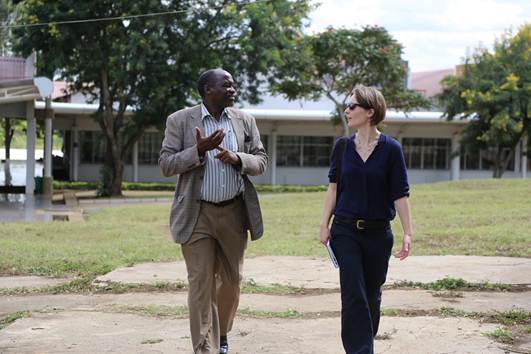Disease detectives: Molecular epidemiology of brucellosis in northern Tanzania
Published: 15 May 2015
A widespread zoonotic disease affecting people across Africa, our team is identifying the livestock species that are the major sources of human disease and gathering information to guide vaccine campaigns.
 Professor Rudovick Kazwala and Dr Jo Halliday at NM-AIST in Arusha, Tanzania
Professor Rudovick Kazwala and Dr Jo Halliday at NM-AIST in Arusha, Tanzania
About the Project
Brucellosis is a fever-causing illness that is widespread in Africa. In humans, it is often mistaken for malaria due to its fever-causing properties, and infection can result in chronic idsability and death. The disease also affects livestock through abortion, lost milk production and slaughtering of infected animals, thereby affecting people not only through their own health, but the health of the animals they depend on for their livelihoods. Brucellosis infects livestock species such as goats, sheep and cows, and the disease can be transmitted to people through direct contact with infected animals, or through consumption of untreated milk products.
The Brucella Project is one of eleven projects funded under the Zoonoses and Emerging Livestock Systems (ZELS) initiative. The Brucella team, lead by Dr Jo Halliday, is working to identify which species of animals are the carriers of the disease strains most likely to infect people, and are using molecular techniques to compare strains from livestock with those from human patients. Once this data is collected, the team will focus on modelling the disease transmission dynamics, and will use their models to learn where vaccine campaigns can be most effectively used to reduce human and animal disease burdens. This work represents the first systematic evidence-based research programme for the purposes of guiding vaccine use for this disease.
First published: 15 May 2015

